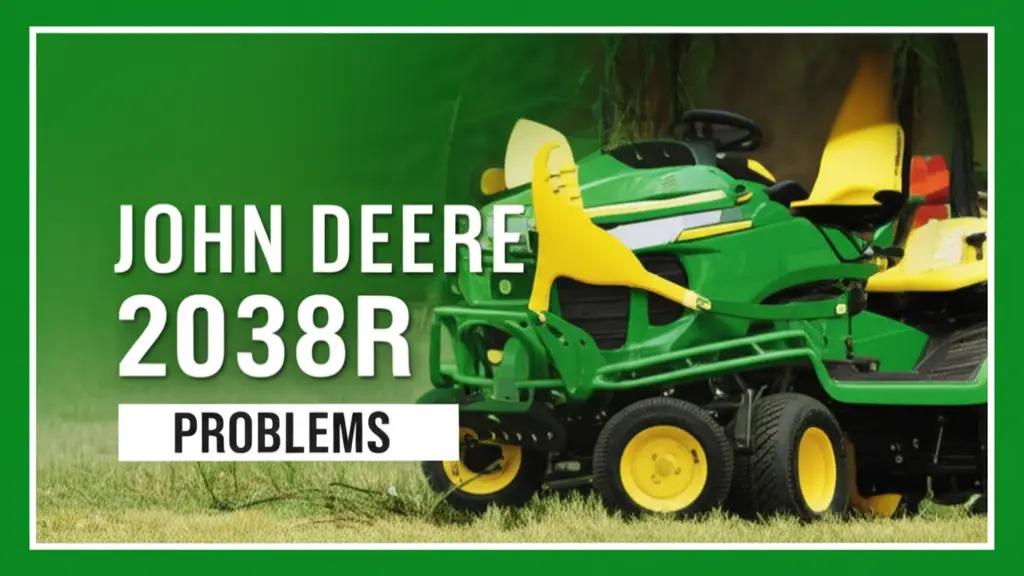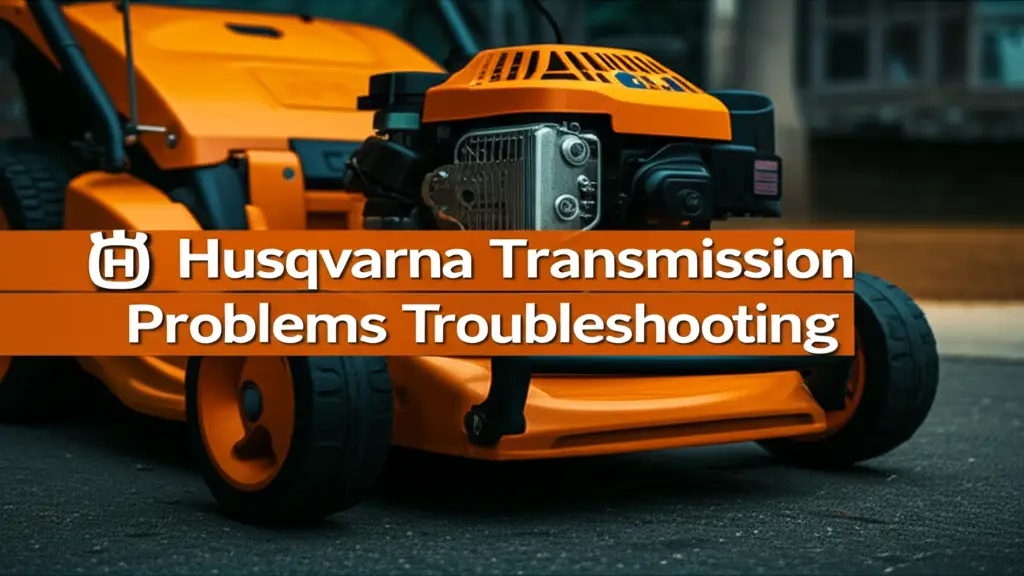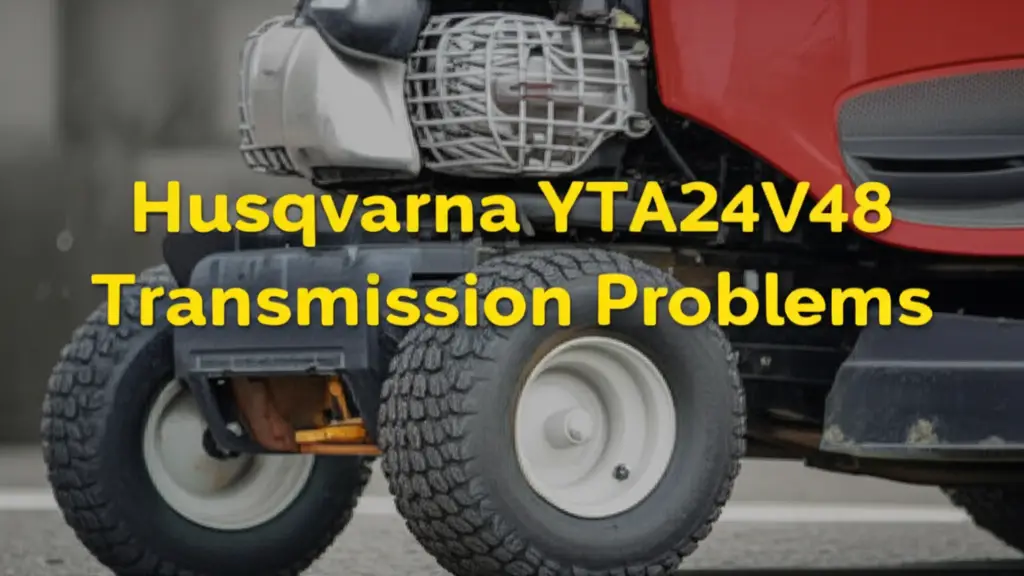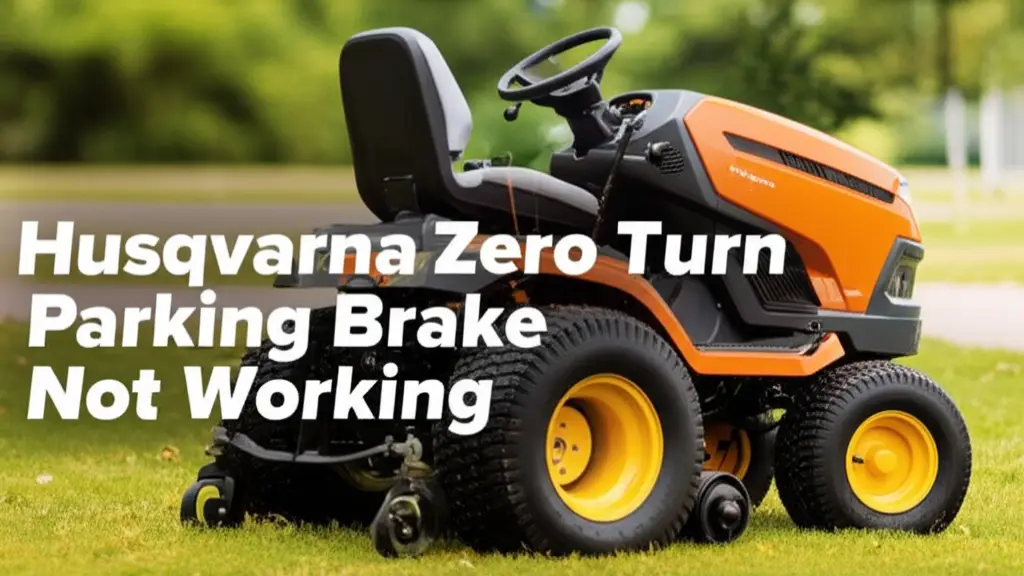· Troubleshooting · 21 min read
John Deere 2038r Problems

John Deere 2038r Problems: A Comprehensive Guide
The John Deere 2038R compact utility tractor is a powerful and versatile machine, a true workhorse for larger homesteads and diverse agricultural tasks.
Engineered for strength, stability, and operator comfort, it excels in everything from extensive mowing to heavy material handling. However, like any sophisticated equipment, achieving optimal performance and ensuring its longevity requires a deep understanding of its operational nuances, adherence to a strict maintenance schedule, and proactive troubleshooting.
This article delves into common issues faced by John Deere 2038R owners, offering insights into their causes and practical solutions, alongside essential maintenance practices to keep your tractor running smoothly for years to come.
Takeaway
- Proactive Maintenance is Key: Regular fluid and filter changes are crucial for preventing major issues and extending tractor life.
- Cold Weather Preparedness: Utilize block heaters and winter-blend fuels to ensure reliable starting in low temperatures.
- Understand DPF Regeneration: Familiarize yourself with the DPF system to manage regeneration cycles effectively and avoid downtime.
- Leverage Diagnostic Codes: Use the tractor’s onboard diagnostic tools to quickly identify and address minor problems.
- Diligent Purchase & Dealer Relations: Be thorough during purchase and maintain a strong relationship with a reputable dealer for support.
The John Deere 2038R is a robust and capable compact utility tractor, but like any complex machinery, it can encounter specific operational challenges.
Common issues include starting difficulties in cold weather, prolonged Diesel Particulate Filter (DPF) regeneration cycles, hydraulic system malfunctions, and transmission/PTO engagement problems.
Addressing these issues proactively through proper maintenance and informed troubleshooting is essential for maximizing the tractor’s performance and lifespan.
Common John Deere 2038R Problems and Solutions
Despite its robust design, the John Deere 2038R, like any complex machinery, can encounter operational challenges.
Understanding these common issues, their underlying causes, and effective diagnostic procedures is crucial for efficient troubleshooting and minimizing downtime.
Starting Issues
Problem Description
Owners often report starting problems, characterized by the engine chugging and then quitting, or the starter failing to turn over, sometimes accompanied by a distinct clicking sound.
These issues are particularly noticeable in cold temperatures, especially below 10°F (-12°C).
Causes
- Battery and Electrical System: A weak or dead battery, loose or corroded battery connections, or faulty battery cables are common culprits for a clicking sound or no crank. Low battery voltage under load indicates a failing battery. A malfunctioning starter, a failing starter relay (often behind the fuse panel), or a compromised ground strap or positive wire can also prevent the engine from turning over.
- Cold Oil Viscosity: In extremely cold conditions, engine oil becomes significantly less viscous, increasing resistance within the engine. This forces the starter and battery to work harder to turn the engine over and generate the necessary compression and heat for combustion.
- Fuel System Issues: Diesel fuel, especially summer blends, can gel in cold temperatures, impeding fuel flow. Stale fuel or an improper fuel level can also prevent starting. A plugged fuel filter restricts fuel delivery, leading to decreased performance and a no-start condition.
- Safety Switches: Modern tractors have safety interlocks. The 2038R will only start if the range lever is in neutral and the PTO is disengaged. A faulty safety switch, such as one on the throttle pedal for hydrostatic drive systems, can also cause a no-start condition.
- Other Potential Causes: A blown fuse, particularly one related to the timing advance system for cold weather starting, or issues with the ignition switch or starter solenoid, can also manifest as starting problems.
Solutions
- Battery and Connections: Ensure all battery terminals and cable connections are clean and tight. Use a multimeter to check battery voltage; if low, a replacement battery is likely needed. Jumping the starter solenoid can help isolate whether the problem is with the battery/starter or upstream components like safety switches or the key switch.
- Cold Weather Preparedness: For operation below 10°F (-12°C), use a block heater for several hours before starting to reduce engine wear and ensure reliable ignition. Employ winter-blend diesel fuel or a fuel conditioner with anti-gel properties. In some situations, using thinner engine oil specifically for winter conditions may be advised.
- Fuel System Inspection: Verify the fuel level, confirm the fuel shutoff valve is open, and inspect the fuel for signs of staleness or contamination. Replace any plugged fuel filters. The 2038R’s fuel system is designed to self-prime, so manual priming is generally not required if the tractor runs out of fuel.
- Safety Interlocks: Always confirm that the transmission is in neutral and the PTO is disengaged before attempting to start. Ensure the engine throttle lever is pushed forward.
- Advanced Diagnostics: If basic checks don’t resolve the issue, inspect the starter gear for proper engagement with the flywheel. Replacing the starter solenoid or checking the starter relay may be necessary.
Diesel Particulate Filter (DPF) Regeneration Challenges
Problem Description
A common complaint among 2038R owners is the DPF regeneration system, specifically its duration.
Users report that regeneration cycles can take “way too long,” sometimes extending for hours, which is highly inconvenient, especially when an operator has finished work for the day and cannot put the tractor away until the cycle completes and the machine cools off.
This extended downtime directly impacts productivity.
Causes
- DPF Function: The DPF captures particulate matter (PM) from exhaust gas.
- Regeneration Types:
- Passive Regeneration: Occurs naturally during normal operation when engine heat oxidizes trapped PM. Automatic, no operator involvement.
- Active Regeneration: Initiated if passive conditions (temperature, load, speed) aren’t met. Exhaust Temperature Management (ETM) adjusts engine parameters or injects fuel into the exhaust to create heat and oxidize PM. Automatic, generally no interruption.
- Parked Regeneration: Manually initiated by the operator in rare cases where passive and active cycles are insufficient, or if automatic cleaning was disabled/ignored. Takes about 30 minutes and requires the tractor to be parked.
- Trigger Conditions: Filter cleaning is determined by time-based estimation, DOC/DPF pressure sensors, or PM buildup estimation based on load conditions.
- Operational Friction: The necessity of the DPF for emissions control creates a burden due to lengthy and frequent regeneration cycles, leading to a conflict between environmental regulations and practical work demands.
Solutions
- Allow Cycles to Complete: It is important to allow the DPF regeneration cycles to complete as designed to maintain system effectiveness and ensure proper emissions control.
- Consider DPF Delete (with caution): Some owners consider DPF delete services, which involve reprogramming the engine’s ECU to disable DPF functions and physically removing the filter.
- Claimed Advantages: Enhanced efficiency, better fuel economy, increased horsepower, reduced maintenance costs (no cleaning/replacement), increased uptime (no regeneration), extended engine life (reduced backpressure).
- Significant Disadvantages: DPF delete operations can render equipment non-compliant with local, state, or federal emissions regulations, potentially leading to fines. Modifying the ECU and removing the DPF can void the manufacturer’s warranty. It also increases particulate matter released into the atmosphere, contributing to environmental pollution.
Hydraulic System Malfunctions
Problem Description
Hydraulic system issues can severely impair a tractor’s functionality, especially its loader and implement operations.
Common symptoms include the bucket failing to lift or tilt properly, or a general restriction in hydraulic flow.
In some cases, the hydraulic response may show slight improvement with increased engine RPM.
Causes
- Clogged Filters/Screens: A primary cause of restricted hydraulic flow is a clogged hydraulic filter or a blocked suction screen located inside the transmission. Condensation can build up in the hydraulic system, especially if the tractor sits unused, leading to sludge formation that clogs these screens and impedes fluid circulation.
- Joystick and Control Valve Issues: Problems with the joystick assembly, such as corroded ball joints, or seized shuttle valves within the control valve, can prevent proper joystick movement and, consequently, hydraulic function.
- Quick Couplers: If the quick couplers for hydraulic attachments are not fully connected, they can cause erratic or strange loader functions.
- Pump or Pressure Relief Valve Problems: More severe issues, such as a failing hydraulic pump or a malfunctioning pressure relief valve, can lead to widespread flow problems, particularly if multiple hydraulic functions are affected or only partially operational.
- Corrosion and Leaks: For tractors idle for extended periods, corrosion can develop within the hydraulic system. An internal hydraulic leak on the high-pressure side can also prevent the PTO clutch pack from engaging properly, leading to a lack of power even if the shaft spins.
Solutions
- Hydraulic Filter Replacement: Changing the hydraulic filter is often the first and most effective step, frequently leading to a noticeable improvement in bucket function.
- Suction Screen Cleaning: If a new filter doesn’t resolve the issue, the suction screen should be inspected and cleaned. This requires draining the hydraulic fluid to access the screen, typically on the right side of the transmission housing.
- Quick Coupler Verification: Disconnect and then firmly reconnect all hydraulic quick couplers to ensure they are fully seated and making proper contact.
- Joystick and Control Valve Inspection: Check the joystick for smooth movement and inspect the control valve for any signs of corrosion or seizing.
- Professional Diagnosis: If these initial troubleshooting steps fail, the problem may indicate a more complex issue with the hydraulic pump or pressure relief valve, necessitating professional diagnosis and repair.
Transmission and PTO Engagement Difficulties
Problem Description
Issues with the transmission and Power Take-Off (PTO) engagement can severely limit a tractor’s utility. Common symptoms include hard shifting between gears, the tractor becoming stuck in neutral or a specific gear, or the PTO lever failing to engage fully or spinning without adequate power or torque.
Causes
- Gear Alignment: The internal gears of the transmission may not be perfectly meshed, preventing smooth shifting. This can occur when the tractor is stationary.
- Physical Obstructions: External debris, such as sticks or other foreign objects, can physically block the gear range selector, impeding its movement.
- Lack of Lubrication: Insufficient or degraded lubricant within the transmission and rear differential housing can lead to increased friction and hard shifting.
- PTO Lever and Shaft Issues: Problems specific to the PTO system include a stuck detent on the PTO lever, a seized PTO shaft within its casing, or a seized selector fork, all of which can prevent proper PTO engagement.
- Hydraulic System Influence on PTO: An internal hydraulic leak on the high-pressure side can compromise the engagement of the PTO clutch pack, resulting in the PTO shaft spinning but lacking the necessary power or torque to drive an implement.
- Safety Interlocks: For safety, the engine is designed to shut off if the operator leaves the seat while the PTO is engaged.
Solutions
- Check for Obstructions: Visually inspect the gear range selector and surrounding areas for any physical blockages.
- “Rocking” the Tractor: Gently pushing or pulling the tractor a few inches, or using the loader bucket to induce slight movement, can sometimes help align the internal gears, allowing the transmission to shift more easily.
- Transmission Fluid Level: Verify the fluid level in the transmission/rear differential using the dipstick to ensure adequate lubrication.
- Lubrication of Linkages: Lubricating components such as the height adjustment speed knob and mower connect can significantly improve shifting smoothness.
- PTO Lever Diagnosis: If the PTO lever wiggles but does not fully engage, inspect the detent mechanism. If the lever is completely immobile, the PTO shaft may be seized within its casing. If the lever moves slightly but then stops, the selector fork might be seized.
- Hydraulic System Check for PTO: If the PTO spins but lacks power, investigate the hydraulic system for potential internal leaks that could be preventing clutch pack engagement.
Other Noted Concerns
Mechanical Self-Leveling (MSL) Loader Limitations
Problem Description
Several users have expressed dissatisfaction with the Mechanical Self-Leveling (MSL) loader, citing “sloppy movement at the posts” and limited tilt functionality. This restricted tilt range, sometimes as little as 10 degrees tilting back, can make it challenging to fully dump loads over high trailer walls or effectively clean stalls, with reports of half the material falling back out. The perceived lack of usefulness can be a significant point of frustration.
Causes
The primary cause is the inherent design limitations of the MSL loader system, which may not provide the full range of motion or precision desired for certain tasks.
Solutions
While there isn’t a direct “fix” for design limitations, prospective buyers should thoroughly evaluate their specific needs for loader tilt and movement before purchasing. Consider demonstrations or discussions with experienced users to understand the practical limitations of the MSL system for your intended applications.
Sales and Dealer Service Quality Issues
Problem Description
Users have highlighted issues during the sales process, where salesmen might initially push a base package, requiring customers to buy desired options separately later. Additionally, “very poor Quality control by the management” at dealerships has been reported, leading to “improper installation of accessories” that resulted in “massive hydraulic fluid leakage” and multiple return trips for resolution.
Causes
These issues stem from sales tactics that prioritize initial sale over comprehensive customer needs, and deficiencies in dealership quality control, installation procedures, or repair services.
Solutions
- Diligence During Pre-Purchase Phase: Be “very specific and diligent about getting all the options” when purchasing the tractor. Thorough pre-purchase research and clear communication with dealers are essential to ensure all desired features are included from the outset.
- Cultivating a Strong Dealer Relationship: Establish a relationship with a reputable John Deere dealer for major service and genuine parts. Crucially, verify the quality of installation for any accessories or modifications performed by the dealer, as improper installation can lead to significant operational problems and potential long-term component failure.
Essential Maintenance and Service Schedule
Proactive and consistent maintenance is paramount to ensuring the longevity, optimal performance, and sustained productivity of the John Deere 2038R compact utility tractor. Adhering to the manufacturer’s recommended service schedule is not merely a suggestion but an economic and performance imperative.
Recommended Service Intervals for Key Components
The John Deere 2038R has specific service intervals for its key components, designed to maximize its operational life.
While John Deere designs for increased service intervals for some components, such as hydraulic oil when using specific products, the frequent replacement of filters underscores that regular, component-specific maintenance is non-negotiable for the 2038R’s long-term health and efficiency.
Key service intervals include:
- Engine Oil and Filter: The engine oil (recommended 10W-30 PLUS-50™ II) and engine oil filter should be replaced every 200 hours of operation or annually, whichever comes first. The engine oil capacity is 5.4 liters (1.4 gallons).
- Transmission Oil Filter: The transmission oil filter requires initial replacement after the first 50 hours of operation, followed by subsequent replacements every 200 hours.
- Hydraulic Oil Filter: Similarly, the hydraulic oil filter should be replaced initially after 50 hours, then every 200 hours. It is important to note that while the hydraulic oil service interval is extended to 1200 hours when using Hy-Gard™ products, the filter still needs changing every 400 hours.
- Fuel Filters: Both the secondary fuel filter and the primary fuel filter should be replaced every 400 hours or annually, whichever occurs first. The fuel and water separator also requires changing every 400 hours or annually.
- Engine Air Filters: The primary and secondary engine air filter elements should be replaced as required based on operating conditions, but generally every 400 hours or annually.
- Transmission/Hydraulic Oil: The main transmission/hydraulic oil (TY22000, John Deere Low Viscosity Hy-Gard™) should be changed after every 400 hours or annually, with a capacity of 47.3 liters (12.5 gallons).
- Front Axle Oil: The front axle oil (TY22000, John Deere Low Viscosity Hy-Gard™) has varying change intervals: every 50, 400, or 600 hours, depending on specific usage conditions.
It is crucial to increase service frequency if the tractor is operated in extreme conditions, such as high heat, dusty environments, or challenging terrain.
Critical Maintenance Parts and Kits
To facilitate convenient and correct maintenance, John Deere offers comprehensive maintenance kits or service kits.
For example, Filter Pack LVA21201 is a complete solution containing two oil filters, one air filter, one fuel filter, and one hydraulic filter, streamlining the process of acquiring necessary components.
Individual part numbers are also readily available for specific filters, such as M806419 for the engine oil filter, LVA14703 for the transmission oil filter, LVA16054 for the hydraulic oil filter, and M131802/M131803 for the air filters.
Additionally, commonly used fluids like Cool-Gard II Plus-50, GL-5 TY26573, Hy-Gard TY26812, and TY6354 are essential for proper maintenance.
Importance of Proactive Maintenance for Longevity and Performance
Regular service and maintenance are unequivocally essential for the performance, productivity, and overall longevity of the tractor.
A significant advantage of the 2038R is that most service interval requirements can be performed by the owner with a basic understanding of procedures and common tools, as all external engine, fuel, and transmission filters are easily accessible. The increased service intervals for certain components, such as the hydraulic oil when using Hy-Gard™ products, contribute to a lower overall cost of ownership.
The detailed maintenance schedule for the John Deere 2038R reveals a design philosophy that balances extended major service intervals with the critical need for frequent, accessible filter replacements.
This indicates that while the core components are robust, their efficient operation is heavily reliant on the purity of their operating environment (clean oil, fuel, and air).
Therefore, adherence to the specific filter replacement schedule is not just a recommendation but an economic and performance imperative.
Skipping these routine, relatively inexpensive tasks significantly increases the risk of premature wear, system blockages, and costly repairs, ultimately undermining the tractor’s reliability and the owner’s investment.
This highlights that the ease of self-service implies a responsibility for consistent, proactive engagement.
The following table the recommended maintenance schedule for the John Deere 2038R:
John Deere 2038R Recommended Maintenance Schedule
| Part/Component | Part Number (if available) | Service Interval (Hours/Annually) | Action (Replace/Change/Check) |
|---|---|---|---|
| Engine Oil Filter | M806419 | 200 hours or annually | Replace |
| Engine Oil (10W-30 PLUS-50™ II) | TY26668 | 200 hours or annually | Change |
| Transmission Oil Filter | LVA14703 | Initially 50 hours, then 200 hours | Replace |
| Hydraulic Oil Filter | LVA16054 | Initially 50 hours, then 200 hours (filter); 400 hours (filter) | Replace |
| Fuel Filter Secondary | M811032 | 400 hours or annually | Replace |
| Fuel Filter Primary | MIU800645 | 400 hours or annually | Replace |
| Fuel & Water Separator | AM881823 | 400 hours or annually | Change |
| Engine Air Filter Element Primary | M131802 | As required/400 hours or annually | Replace |
| Engine Air Filter Element Secondary | M131803 | As required/400 hours or annually | Replace |
| Transmission/Hydraulic Oil (Hy-Gard™) | TY22000 | 400 hours or annually (oil); 1200 hours (oil with Hy-Gard™) | Change |
| Front Axle Oil (Hy-Gard™) | TY22000 | 50/400/600 hours | Change |
Utilizing Diagnostic Trouble Codes (DTCs)
Modern John Deere tractors, including models within the 2R Series like the 2038R, are equipped with sophisticated onboard diagnostic capabilities.
Understanding how to access and interpret Diagnostic Trouble Codes (DTCs) empowers owners to perform initial self-diagnosis and troubleshooting, significantly reducing reliance on professional service for common issues.
Accessing DTCs on 2R Series Tractors
For John Deere 2R Series tractors, similar to models like the 5067E, trouble codes can typically be accessed directly from the operator’s station.
This is often achieved by holding down a specific button on the left side of the steering column for approximately 5 seconds.
Upon activation, the diagnostic code, such as “ECU 9703,” will be displayed on the screen. While the 2038R is a 2R series, some John Deere models, particularly M Series tractors, may offer a more intuitive display with a roller dial and select buttons on the dashboard to navigate to the diagnostic section and view active trouble codes.
Older John Deere models illustrate a common principle of using dashboard controls for diagnostics, such as turning the hazard flasher switch on/off or moving the turn signal lever to access diagnostic modes and cycle through codes.
The availability of accessible diagnostic trouble codes (DTCs) and their interpretation methods (dashboard display, online search, Tractor Plus app) reflects John Deere’s commitment to enabling owner self-sufficiency in basic troubleshooting.
This capability reduces the need for immediate, potentially costly service calls for simple issues like “water in fuel” or “plugged air filter,” thereby saving time and money for the owner.
It highlights a trend towards more user-friendly machine diagnostics in modern agricultural equipment, shifting some diagnostic responsibility from the dealer to the owner and promoting a more proactive and informed approach to maintenance.
Interpreting DTC Formats
John Deere fault codes follow a standardized alphanumeric format, providing specific information about the detected malfunction. A typical fault code might appear as “ECU 001509.07”. Each part of this code conveys crucial diagnostic information:
- System Identifier (e.g., “ECU”): This prefix indicates the specific electronic control unit or system where the fault originated. “ECU” stands for Electronic Control Unit. Other common abbreviations include BCU (Basic Control Unit), BIF (Basic Informator), EPC (Electronic PowrQuad Controller), PrF (Performance Monitor), and DIA (Diagnosis).
- Code Number (e.g., “001509”): This is a unique numerical identifier corresponding to the specific fault detected.
- Failure Mode Indicator (FMI) (e.g., “.07”): The suffix, often referred to as FMI, provides more detailed information about the nature of the fault. This could indicate conditions such as “Voltage Out of Range High,” “Low-Most Severe,” or “Intermittent”.
Common DTCs and Their Corrective Actions
Understanding common DTCs and their associated corrective actions is a powerful tool for owners. The simplest do-it-yourself approach for interpreting these codes is a quick online search using the specific code as the search term. Additionally, the John Deere Tractor Plus app can provide detailed explanations and troubleshooting steps for specific codes.
The following table lists some common John Deere 2R Series DTCs, their fault descriptions, and recommended corrective actions:
Common John Deere 2R Series Diagnostic Trouble Codes (DTCs) and Corrective Actions
| SPN | FMI | Fault Description | Corrective Action |
|---|---|---|---|
| 000094 | 17 | Fuel Delivery Pressure Low-Most Severe | Check Fuel Supply and Prime System |
| 000094 | 18 | Fuel Delivery Pressure Low-Least Severe | Check Fuel Supply and Prime System |
| 000097 | 00 | Water in Fuel | Check Sensor and Wiring |
| 000097 | 16 | Water in Fuel Detected | Stop and Drain Water Separator |
| 000097 | 31 | Water in Fuel Detected | Stop and Drain Water Separator |
| 000100 | 01 | Engine Oil Pressure Low-Most Severe | Check Oil Level |
| 000100 | 18 | Engine Oil Pressure Low-Moderately Severe | Check Oil Level |
| 000107 | 00 | Air Filter Restriction High | Check for Plugged Air Filter |
| 000107 | 31 | Air Filter Restriction | Check for Plugged Air Filter |
| 000110 | 00 | Engine Coolant Temperature High-Most Severe | Check Cooling System, Reduce Power |
| 000110 | 16 | Engine Coolant Temperature High-Moderately Severe | Check Cooling System, Reduce Power |
| 000158 | 02 | Keyswitch Intermittent | Check Service Manual |
| 000158 | 17 | Keyswitch Circuit Problem | Check Service Manual |
| ECU | 001000.09 | Fuse F24 is faulty | N/A (implied: check/replace fuse) |
| BCU | 000070.31 | Hand brake is faulty | N/A (implied: inspect hand brake system) |
| TCU | 304032.02 | Electrical system has a short circuit | N/A (implied: diagnose electrical short) |
FAQs
What to do if John Deere won’t start?
If your John Deere 2038R won’t start, first check the battery connections for looseness or corrosion. Ensure the transmission is in neutral and the PTO is disengaged. In cold weather, consider using a block heater and winter-blend diesel fuel. Verify fuel levels and check for a plugged fuel filter. If it only clicks, it’s likely a battery issue or a bad connection to the starter.
Why won’t my John Deere D130 start?
While the D130 is a different model, common reasons for a John Deere not starting often include a dead or weak battery, clogged fuel filters, stale fuel, or issues with safety interlock switches (e.g., transmission not in neutral, PTO engaged, or operator not in seat). Cold weather can also cause fuel gelling or thick oil, hindering ignition.
How to read John Deere trouble codes?
For John Deere 2R Series tractors like the 2038R, you can often access trouble codes by holding down a button on the left side of the steering column for about 5 seconds. The code will display on the screen (e.g., “ECU 9703”). You can then search for the code online or use the John Deere Tractor Plus app for detailed explanations and troubleshooting steps.
What is the difference between 2032R and 2038R?
The John Deere 2038R is more powerful than the 2032R, boasting 36.7 hp gross engine power compared to the 2032R’s 31.2 hp. The 2038R also has a heavier, more stable frame (2910 lbs vs. 2436 lbs), providing maximum stability for heavier loads and attachments. Both share similar transmissions and hitch types.
What is the difference between 2025R and 2038R?
The 2038R is significantly more powerful (36.7 hp vs. 23.9 hp) and heavier (nearly 3000 lbs vs. ~1800 lbs) than the 2025R. The 2038R can handle all Category 1 attachments with a 1356 lb lift capacity, while the 2025R has limited Category 1 compatibility and an 800 lb lift capacity. The 2025R is more maneuverable, while the 2038R offers advanced features like CommandCut™.
What causes a John Deere not to start?
A John Deere tractor may not start due to a range of issues including a discharged or faulty battery, loose or corroded electrical connections, a clogged fuel filter, stale or gelled fuel, or a closed fuel shutoff valve. Safety interlock switches, such as those for the transmission or PTO, can also prevent starting if not correctly engaged.
What is the John Deere 2038R maintenance schedule?
Key maintenance for the John Deere 2038R includes replacing engine oil and filter every 200 hours or annually, and transmission and hydraulic oil filters initially at 50 hours, then every 200 hours. Fuel filters and air filters typically need replacement every 400 hours or annually. Transmission/hydraulic oil should be changed every 400 hours or annually.
Final Words
The John Deere 2038R compact utility tractor is an exceptional investment for those needing robust power and versatility on larger properties.
Its strong engine, impressive PTO, and stable frame make it a reliable partner for diverse tasks. However, to truly unlock its potential and ensure its longevity, proactive ownership is paramount.
By diligently following maintenance schedules, understanding the nuances of systems like DPF regeneration, and leveraging onboard diagnostics, you can significantly reduce downtime and extend the life of your John Deere 2038R.
Remember, a well-maintained tractor is a productive tractor. For any complex issues, always consult your trusted John Deere dealer.
- John Deere 2038r
- Compact Tractor Problems
- Tractor Maintenance




